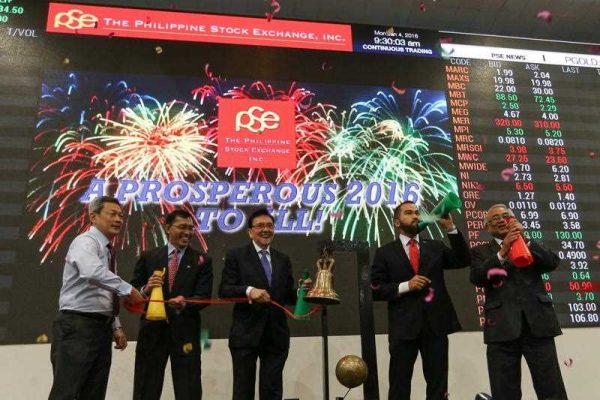Forecasting suggests that 2016 could be a good year for the Philippine economy. Both the Asian Development Bank and the IMF predict that the Philippines will grow at about 6 per cent in 2016, which is similar to the figure for the previous year. This is nearly twice the IMF’s 2016 forecast of 3.4 per cent for the world economy, which is transitioning to a new pattern of growth.
Some foreign investors are also bullish on the Philippines as an investment location. Toyota Japan recently announced a 2.5 billion peso (about US$50 million) investment to increase production and localisation of the 2016 model of the Innova in the Philippines. Teleperformance, the French call centre operator, has created as many as 42,000 jobs in the Philippines and plans further investment.
The main reason for this is the Philippine presidential elections, scheduled on 9 May 2016. Election related spending — including advertising, political giveaways and subsidies — will boost services and consumer-related manufacturing in the Philippines. And a stronger than expected recovery in the United States will increase the demand for Philippines exports and United States foreign direct investment to the Philippines.
The Philippine economy is also benefiting from historically low oil prices and moves towards the ASEAN Economic Community, which will create a regional market of over 600 million people. The services sector in the Philippines will continue to be a major driver of growth with back office processing, tourism, retail and construction in particular providing a major boost to the economy. Manufacturing activities such as processed foods, consumer goods and automotives will also help foster growth.
But an economic slowdown in China and the prospect of rising interest rates in the United States can pose risks for the Philippines. Amid slowing growth and trade, China’s necessary shift towards consumption-led growth may mean less trade and investment with the Philippines as well as less tourists.
The US Federal Reserve raised interest rates for the first time in a decade and has indicated a gradual tightening cycle for monetary policy. A stronger US dollar, backed by higher interest rates, may risk triggering capital outflows from the Philippines, reduce domestic liquidity for businesses and introduce financial risks. The country’s current account surplus, reserves and robust banking system will help to mitigate this risk. Added to that, falling oil prices and slower growth in oil exporting economies are likely to mean less opportunities for migrant workers from the Philippines, lowering remittances.
The Philippines could overcome some of the risks associated with these changes by further investing in infrastructure, reforming business regulations and financing small- and medium-sized enterprises (SMEs). Infrastructure investment in the Philippines has risen since 2008. Actual disbursement (not including public–private sector partnerships) was 2.2 per cent of GDP in 2014 according to official sources. But this figure is low when compared with more developed ASEAN economies such as Singapore and Malaysia.
There are plans to increase infrastructure investment to 5 per cent of GDP in 2016. Renewed emphasis on public–private partnerships can help to solve the Philippines’ infrastructure needs. Mactan Cebu Airport is a worthy example of a public–private partnership, which is in the early implementation phase.
Cumbersome business regulations remain an important challenge for the private sector and reform to streamline redundant rules is needed. According to the World Bank, it still can take as much as 29 days to overcome the 16 procedures to start a business in the Philippines compared with 3 days in Singapore and 4 days in Malaysia, although the time required has been falling.
The bulk of the jobs in the Philippines come from SMEs, but the sector is hamstrung by a lack of financing from formal financial institutions. It is estimated that the unmet credit needs for SMEs in the Philippines amount to around US$2 billion or US$59,000 per SME. Reforming collateral laws, improving credit guarantee institutions and better financial literacy programs for entrepreneurs are key.
Despite a challenging global economic environment in 2016, there are good reasons to be optimistic about the economic outlook for the Philippines. The incoming government in 2016 has a wonderful opportunity to emphasise continuity and deepen reforms relating to infrastructure investment, reforming business regulations and financing SMEs.
Ganeshan Wignaraja is advisor in the Economic Research and Regional Cooperation Department of the Asian Development Bank.
This article is part of an EAF special feature series on 2015 in review and the year ahead.


Hopefully, the tensions with China regarding the islands in dispute will not overwhelm the Philippines’ need to focus on its economy.
Can ASEAN or APEC help fund more infrastructure development with low interest loans? Or Japan which has decades of experience in infrastructure development? Can it help via loans, investment, and/or consultstion in this area?
Indeed, the Philippines has the best potential of economic growth in Asia. Considering the educated young generation, the rich Natural Resources and the exposure to over 200 countries represented by Filipinos overseas , lead to continous increase of GDP. Support to local SMEs and Regional PPP, I think are priorities if faster growth is desired. The Philippine foreign offices can tap also the export (PH products & services) potentials and the cooperation of retired Filipino/foreign nationals in their respective areas of responsibility. Filipinos Overseas can participate by sharing their knowledge and experiences if they are not interested in investing in the Philippines.
Leaving aside the American economist John Kenneth Galbraith famously said aside, what are the track records of economic forecasts of the ADB, IMF and World Bank?